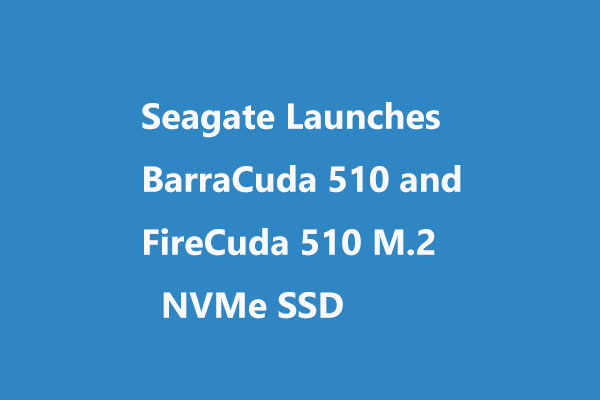When you want to update the performance of your computer, you may want to replace the old SATA SSD with the NVMe SSD. Is it a wise choice? Now, in this post, we will show you some related information. Hope it is helpful.
After using the computer for a long time, the response speed of the machine will be slower. The best choice to improve the performance is to replace the old boot drive with a new SSD.
An SSD is expensive and the NVMe model even more so. So, you may want to choose a not-that-huge SATA version. Perhaps, it is a little small now and you are interested in the NVMe models which have good specifications.
Then, is it worth using an NVMe drive when you want to update? In this post, we will show you some related information.
Whether Your Computer Supports NVMe?
If your system doesn’t support NVMe, you will be unable to use such a fast SSD. So, you need to have some type of drive interface that runs as PCIe speeds. A dedicated card or an M.2 slot is the most common option for you.
But, you should know that not all M.2 slots support NVMe. Thus, even if you have an M.2 slot, you still need to double-check whether you can use it for NVMe.
Tips for Clone SSD
When you need to replace the old hard drive with a new SSD, you can consider cloning your current boot drive to the new one if you don’t want to clean install Windows. To do this job, you can refer to this article: Easily Migrate Windows 10 to SSD without Reinstalling OS Now!
Additionally, you also need an enclosure which can power and connect the new SSD. If you have an empty M.2 slot, you can directly plug the new drive into it and clone Windows immediately.
How Much Faster Are NVMe Drives?
Here, take Samsung 850 EVO SATA SSD and Seagate Firecuda M.2 NVMe SSD as an example.
Crystal Disk Benchmark
Disk benchmarks can provide a good baseline of what’s possible with a particular drive and system combination. Thus, the drives have been tested with Crystal Disk Benchmark. The result shows that the sequential read and write speed of NVMe SSD is much faster than the traditional SATA hard drive.
User-Visible Performance Improvements
We use PCMark to test the SSDs and the results show that the differences are very small. In general, the speedup was between 3 and 5 percent. It is still not enough that you will not feel like you have an amazing new computer.
Referring to the Storage benchmark, there is an interesting result: the gains are so small when comparing with the raw disk benchmarks which have been shown earlier.
You can see that Firecuda has a huge jump in storage bandwitch. But, it didn’t result in the benchmark scenarios running substantially faster.
When measuring the overall time taken for common processing tasks, the speedup was also fairly small.
All in all, you can see that after moving from a SATA SSD to an NVMe one, there are some improvement in the time reduction and system performance. But the changes are not dramatic. Fortunately, the prices for both types of SSD continue to fall.
After using a new NVMe SSD on your computer, you can use the old drive to do other things such as backing up your files.
